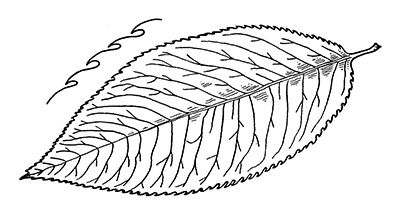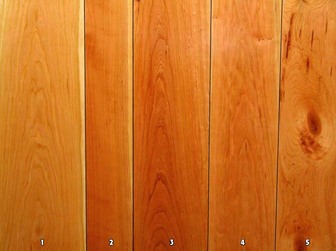Intro to Trees of Indiana: Black Cherry
The classic and trusted book "Fifty Common Trees of Indiana" by T.E. Shaw was published in 1956 as a user-friendly guide to local species. Nearly 70 years later, the publication has been updated through a joint effort by the Purdue Department of Forestry and Natural Resources, Indiana 4-H, and the Indiana Department of Natural Resources, and reintroduced as "An Introduction to Trees of Indiana."
A printed copy of the full publication is available for purchase for $7 in the Purdue Extension Education Store. The field guide helps identify common Indiana woodlot trees.
Each week, the Intro to Trees of Indiana web series will offer a sneak peek at one species from the book, paired with an ID That Tree video from Purdue Extension forester Lenny Farlee to help visualize each species as it stands in the woods. Threats to species health as well as also insight into the wood provided by the species, will be provided through additional resources as well as the Hardwoods of the Central Midwest exhibit of the Purdue Arboretum, if available.
 This week, we introduce the Black cherry or Prunus serotina.
This week, we introduce the Black cherry or Prunus serotina.
This species, also known as wild black cherry, is characterized by shiny, oblong leaves with finely toothed margins, arranged alternately on slender twigs, as well as very dark, flaky bark. The white flowers, which appear in early summer, develop into clusters of small cherries that ripen from red to black in July and August.
Black cherry, which is shade intolerant, is the only native, tree-sized cherry tree in Indiana. It is one of the quicker growing upland hardwood species in the state, and can grow to 60 to 80 feet tall and two to three feet in diameter.
The species is found from the Great Plains east and from Central Florida to the very southern portion of Ontario to New Brunswick. It also grows from central Arizona south through Mexico. Pennsylvania, parts of West Virginia and New York have developed a reputation for having the best veneer quality and relative gum free cherry.
Black cherry is susceptible to gummosis, or the depositing of resinous gum on the bark of the tree. Unfortunately, widespread gummosis caused by insect damage and other factors keeps many black cherry trees from reaching veneer quality, and reduces their value by as much as 90 percent (Cassens 2004). Black cherry trees are also susceptible to forest tent caterpillars and a variety of other insect attacks.
According to the Hardwoods of the Central Midwest exhibit, black cherry is most commonly used for fine furniture and cabinets. It is also used for high-end face veneer, furniture, molding, architectural millwork, wood paneling and toys. In the past, it was used for printer’s blocks, scientific instrument cases, pattern stock, and blocks for mounting electrotypes.
furniture and cabinets. It is also used for high-end face veneer, furniture, molding, architectural millwork, wood paneling and toys. In the past, it was used for printer’s blocks, scientific instrument cases, pattern stock, and blocks for mounting electrotypes.
At one time, black cherry was used as a substitute for mahogany. Black cherry wood is a light pink color ranging to a dark red/brown, though the color will darken with exposure to light. When finished it takes a reddish brown, lustrous appearance.
At 12 percent moisture content, cherry weighs 34.9 pounds per cubic foot, making in an intermediate to light weight species, however it is a relatively strong wood for its weight.
Other Resources:
Black Cherry - Hardwoods of the Central Midwest
Black Cherry – Hardwood Lumber and Veneer Series
Causes of Gummosis in Black Cherry
Insects Affecting Hardwood Tree Plantings
Purdue Plant Doctor
Native Trees of the Midwest
Shrubs and Woody Vines of Indiana and the Midwest
ID That Tree YouTube playlist
Woodland Management Moment YouTube playlist
Investing in Indiana Woodlands
Forest Improvement Handbook






